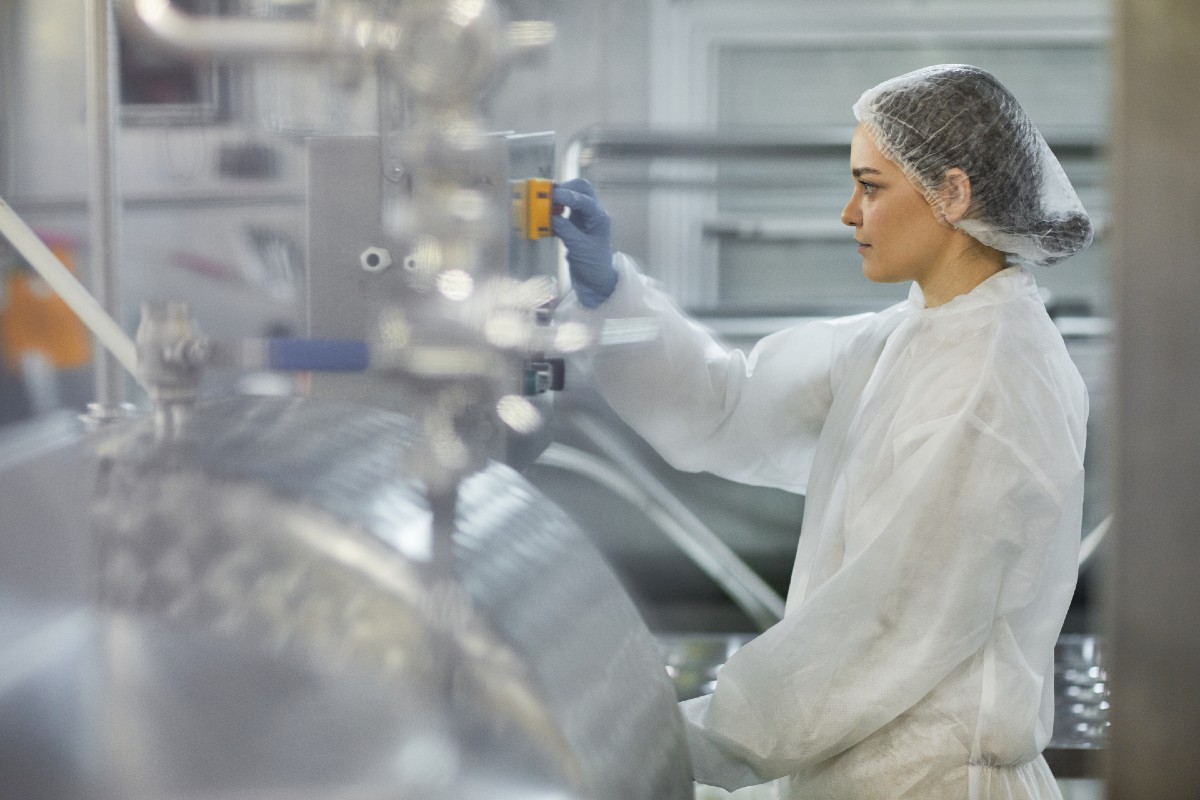With 3.3 million jobs and $42 billion in direct wages, the dairy industry requires a robust workforce to maintain operations. Yet current labor challenges have resulted in many dairy processors experiencing a decline of 10% or more in their workforce with about two job openings for every one person seeking employment, according to International Dairy Foods Association (IDFA) president and chief executive officer Michael Dykes.
The most recent data from the US Bureau of Labor Statistics estimates there are 803,000 job openings in the manufacturing sector, including food.
Industry leaders have named immigration reform and automation as some of the possible ways of alleviating the situation, but it’s also clear that valuing industry workers is essential for future success.
“We used to always say customers are most important, but today people are the most important,” Dykes said. “If we don’t have the people to get the inputs in, get the product made and get the finished product out to the consumer, we won’t have customers.”
Not adding up
A declining birth rate, large numbers of baby boomers reaching retirement age, increasing dairy consumption and record low unemployment have all combined to lead to workforce shortages, leading Dykes to call the issue “a simple, straightforward math problem.”
Additionally, the location of processing plants in rural communities near the farms have added to the challenges of recruiting workers, and it is requiring the industry to look beyond higher wages for long-term solutions.
“You don’t differentiate yourself in the competitive market by simply paying more,” Dykes said. “Everyone is paying more.”
Retention bonuses, flexible schedules and part-time work options are some other incentives industry leaders are using.
“We have been able to increase interested applicants by providing different shifts,” said Dave Coble, senior vice president of human resources for Schreiber Foods, Green Bay, Wis. “We tend not to have one exact shift for the entire operation. Different lines may offer different types of shifting schedules, so people have different options as to what hours they work.”
Open communication and asking applicants what works for them also have been key, Coble said.
Schreiber Foods also is piloting a childcare subsidy program and is partnering with a group that will build up childcare networking services for employees. Coble said in the past many employers didn’t want to get involved in childcare assistance, but he believes it must be addressed and will be a focus for the company going forward.
Hilmar Cheese Company, Hilmar, Calif., has used onsite job fairs, moved to more remote and hybrid workers, and has increased its employee referral bonuses to attract more workers, said DeeAnne Marlow, vice president human resources. While it’s not possible to offer many positions in a remote capacity, it broadens the talent pool of potential workers when it can be done.
Marlow also said it’s not always possible to hire someone with manufacturing experience, and as a result more training is often needed. She said the company tailors its training to the specific worker’s needs. Hilmar Cheese has a formal training program for trainers, supervisors and team members.
Ramping up technology through automation will also create less of a dependency on people.
“There is more emphasis on capital investments into automation,” Coble said. “The labor shortage is something that is going to continue into the future, so you have to be ready for the long term.”
At the same time, automation is not without its labor challenges. Dykes said with increased automation comes a need for employees with new skill sets in running systems and ensuring cybersecurity.
“I think politicians are beginning to understand and appreciate that when we talk about building a new facility or expanding an existing facility and we are putting in automation to help with the workforce,” Dykes said. “We aren’t taking away jobs from hardworking Americans. There aren’t enough hardworking Americans to fill these jobs.”
 Photo: Seventyfour - stock.adobe.com
Photo: Seventyfour - stock.adobe.com
Eyeing solutions
Dykes said immigration reform is essential to stabilizing the workforce for the future, and the IDFA and many industry members advocated heavily recently for the passage of the Farm Workforce Modernization Act. An important piece of this legislation included a nationwide E-Verify system to support border security.
Ultimately, the measure did not pass in Congress in 2022, but the IDFA will continue to work to advocate for bipartisan agriculture workforce reform including assistance for dairy processors, according to Andrew Jerome, associate vice president of communications for IDFA.
“Immigration reform is not to replace US workers, but if we want to keep the economy moving, we have got to be able to produce at the level of demand,” Coble said. “Right now, we are on the edge across the US.”
Such reform also is needed to ensure food security and affordable prices for consumers, according to David Ahlem, president and CEO of Hilmar Cheese Company. He said the company consistently runs 10% short or more on its workforce, which creates food safety issues and increases costs.
Heather Draper, director of The Ice Cream Club, Boynton Beach, Fla., said workforce challenges are inhibiting the manufacturer’s ability to expand, and she expressed concerns that without immigration reform the US will become increasingly reliant on food imports.
More solutions are coming with an overall focus on including more diversity in the workforce.
The Hershey Company, Hershey, Pa., implemented a “Say Hola” program at its plant in Hazleton, Pa., using bilingual trainings, signs and resources to integrate both English and Spanish-speaking employees. As a result, the company has reported an increased retention rate and found more experienced candidates applying for jobs. After nearly a year of the program, more than 90% of the facility’s recruitment classes had the desired level of experience compared with 50% before the program.
The IDFA also is leading a diversity, equity and inclusion effort alongside its membership, as well as a program centered on women in the dairy industry.
“All companies are recognizing that we need to make sure we have a diverse workforce so we can attract and retain talent from across the spectrum,” Dykes said.
Hiring for the future
A new approach to hiring also will be needed going forward. Coble said expectations are shifting. Employers used to be able to hold out for the most impressive candidates, but that’s not always possible today.
Coble said Schreiber Foods has always looked to hire not strictly based on experience. Rather, the company considers work ethic and willingness to learn as valuable traits, which is becoming increasingly important in today’s environment.
“It used to be there was such a danger of hiring someone who was not a good fit and you had to deal with it,” he said. “Now the bigger danger is not making an offer to someone who potentially would have made it and stayed on.”

